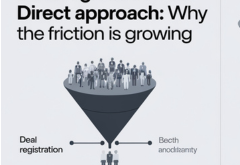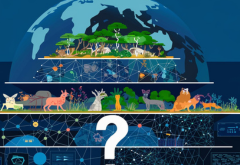Anil Sethi | VP & GM -Channels | Dell Technologies explains how its partner ecosystem has rallied round in challenging times.
What are the significant changes in Dell’s go-to-market strategy to adhering to customer requirements especially during these unforeseen times of the pandemic?
There is no change in GTM that happened during this time. We started the year with the having corporate business site and then we have enterprise business and then we have channels sketched across both enterprise and corporate. That is how we are structured. When we all landed into this during the end of March sometime, it was the time when we started realizing the impact gradually, and how intense it was becoming and how sudden.
Then we started looking at areas where we need to help partners and to see that, we have an ongoing business. We created different ways and different packages to help our partners. By the end of June and July, businesses started showing a good sign of recovery.
What were the initiatives undertaken for the partner community, especially on relief packages and financial solutions offered?
When we were completely under the lockdown state, and the crisis started hitting and people started realizing the impact, there were three things which we commonly heard from the partners. One was definitely cash, which was the biggest issue and it continues to remain so. That was where they needed help.
The second was that they were working with their customers to see how they can help them and to help customers they required some deliveries to be happening because customer needed certain things. These things were just coming up because work from home culture was suddenly implemented across.
The third was to see that, how we can help their existing sales force when they are interacting with the customers, how they can be more effective and how we can build skills towards them when they talk to the customers so that they are able to make meaningful conversations.
We have working capital solutions implemented where we gave extended partners extra credit lines, depending upon to the partner or extra credit period. This helped partners to resume new business, close new business and at the same time when the collections were not happening it was quite helpful to them.The cost of capital in India is high, so when this extension and credit lines help them, adding up to the profitability as well, by the way.
Dell has one of the best supply-chains in the world and during this time also we never had any major, serious delivery issues like deliveries not being there. Obviously it was not getting it into the country, we were actually hit. But we did a lot of things for the partners. We got some of the planes chartered and got important deliveries for customers and partners to ensure that work from home was implemented immediately. In terms of deliveries from our effective supply chain helped them meeting customer demand and needs at that point in time.
Third thing, for the people we had set up the special training for the teams and this was in fact given free of cost to the partner representatives and partner sales force. And there was high skilled certifications done, training done on storage, compute, hybrid cloud and multiple kind of technologies. These are the kind of things which went on and that helped partner come back and today we are in extremely good road to recovery.
How are you balancing between new client acquisition and retaining existing customers by partners in these pandemic times?
Strategy does not change over acquisition and retention of the customers. That continues but during this time the partners reach out to their existing customers. Most of the partners help them in reorganizing their workloads, helping them in ensuring their business continuity and ensuring that how there is a seamless work that happens for them. So that was something which everybody did with their existing customers. It was a great time to demonstrate the two partnerships.
There are always new customers. Acquisition is of two types. One when the partner does it himself and one when we pass it on to the partner. So from July, we seem to restocking about 60 odd percent of the partner operations and they are back and their teams and people are operating and the customer interactions have dramatically increased.
When I compared it from May and June, acquisition is working well and I think in coming months, it would be much better.
How are the types of workloads shifting among enterprise clients from on-prem to cloud mode ?
Cloud is one very important way to consume IT. It is a different way to do that is becoming very popular within the customers. There are two things I like to say over here. The first thing is that we did see some of the workloads that moved on to the cloud but these were not very important workloads. We also saw repatriation by the way, maybe because that was an emergency situation. Some of the not so important things kind of moved over there because the budget got changed.
Currently we are launching get cloud ready in 48 hours. We are doing it for all our customers and what it does mean is basically that you can get hyper-converged in the next 48 hours. So we have this hyper-converged solution, VxRail and customers can accelerate all their hyper-converged applications and can get all the cloud native applications onto it for the developers. They can set up the Google meets, they can have entire VDI solution, which are most important at the current time.
We got to see that BFSI people were more on their own private cloud and on-prem and because of different security and other reasons. And there are some segments of the market which took this position of moving workloads during that time high on their agenda.
How did Dell help in inculcating WFH culture internally, amongst its partners and its customer ecosystem?
We always had about 40% of our population of working from home, globally. So this was not new for us and we had good system and processes in place to make this a point that extended to the balance set of the employees. It has been perfect working over there for us. In this, continuity has not been an issue with us at all. It is extremely important for us to see that our team members are safe and that is of prime importance. The most important thing in the company for us is to take care of our people, because they are the center of everything that we do.
What were the realignment of outreach programs by partners and prioritization of key focus areas in marketing?
Marketing priorities definitely went digital. All digital aspects of marketing are being implemented by our partners. In fact, we have gone ahead and said that people can take cash of 50% of their MDF to do any of the marketing activities and we also help them in case they are required to hire resources. An extremely special thing during this time for partners was to ensure that they continue to work towards creating demands in the market, and so we needed to support their marketing initiatives.
We have also been working with our distributors to see that we had good visibility across the market about all our cloud solutions, all our work from home solutions. How are they different? How does a customer need to understand that? So all of those activities continue, and there are different ways that partners have adopted. Virtual meetings have been one big success story across the industry. I think that has definitely been very helpful for people to stay connected. There was a big customer event which was done by our one of the partners virtually.
On the outreach thing, we have put up a different plan. We are working with the partners to see how they can use some of our marketing development funds, See that how we can add and add more capacity into those areas and see how we can reach out and ensure that we help start the business back into some of those tier 3 and tier 4 towns. These things are planned and largely being worked with our distributors.
Which are the technologies Dell witnessed traction for and vertically what were the domains from where maximum customers showed interest?
We definitely saw one of the high performing solutions has been VDI and that has been getting implemented across the verticals by many customers. The second was t in the terms of the storage solutions. This is a time when some of the large customers anyway are planning their capacity. So we see storage solutions in demand right from standard storage solutions to most important backup. I think the backup solutions have been very critical. We have seen the advancement in the way people are now setting up their DRs and how they are seeing security during this time. I also feel that there is going to be an advancement coming up in AI and ML. You will see more of edge or PCs, which will be smarter and more collaborative components in the coming time.
If we go about different verticals, BFSI definitely has been booming even during this time. The way the digital acceleration has happened and the most important thing I would say is that the way we have seen adoption of adoption of digital transformation is phenomenal. Healthcare is another vertical which is going to be one of the most sunshine industries from IT consumption point of view. Education is the third one, which you are hearing everybody talking. I feel, as this whole thing opens up there is going to be a pent up demand coming up in aviation and tourism a couple of months from now. We have also started now seeing a recovery on an SMB side, and that is very heartening.
How did the partners react to specific relief packages from Dell and how did the supply chain sustain the anti China sentiments?
We helped partners during this time to manage their cashflow issues, which were rising.
Second, we said that you can have a 50% of the MDF funding cashed and then can you put it into the marketing activities to generate demands or hire resources. The third bit was where we offered free training on storage. These are generally paid trainings, which were given to the partners and technical teams free of cost.
There was no Impact on Dell’s product supply chain notwithstanding sentiments against products imported from China. We had one of the best supply chains in the industry and we have factories all over the. Depending upon the countries where they are, they cater to the various countries for different products. So that is where it helped. So whether it was coming from China or, we have those factories up there as a part of the supply chain and during this time, if anything was there, it continued to be so. Anyway we will work as per the government rules whenever that is happening. At the same time, we have an Indian plant over here and that meets most of the demand for clients devices.
Not just partners, even Dell team prefers physical face to face meetings to close deals. With these not possible now, how are you managing the situation?
When things get tough, adoption actually happens very fast. This was a very different time. So this is a time everybody across the globe has accepted this new norm. It is about certain expectations. Normally somebody comes back and says you have to come and meet me and then we talk about business discussion or conversation. We will close the deal then. Because this is a new way the whole globe is looking at now, everybody accepted the change, including the customer because everyone is a part of this whole issue.
I felt that some of the discussions happened much faster and the closures happened much more fast than it would have happened on face to face meetings because there was fixed timings. You come on and actually interact and share data, share your analysis or whatever you want to talk about. Just that we are not sitting physically, the point is not that as if we are alone, but it is also that customer is not there. So, this situation is global or cross India and hence this new format meeting became acceptable. We all have accepted that this is going to live for long and for some time. Maybe it is not to that level as it was earlier, but I am sure it is going to improve and reach to that level soon. It is also not at that level what we experienced in April or May, and every passing week, it gets better. I think that is very healthy and very good for the business and economy. It is important to see that some of the market indicators which have been there, which were earlier not showing up the big picture, are all certainly changing.
What are going to be Dell’s key focus priority areas for next 6 months as we head towards recovery?
The priority areas would be that how we help customers reorganize their workloads. That is super most important thing in my opinion because there are some very important decision making that could happen depending on that.
The second is to see that, how we can help our partners in terms of working capital solutions so that, they do not get anywhere restrained by the capital investments that has to come in. This is very important to keep the business moving. The most important thing is to see that the business kind of continues to move.
The third would be that as we have seen that customers especially in the BFSI space continue to invest in the same manner as before. It is important to see that we stay focused on these two important verticals because there is a lot of activity around that. We have to see that we are able to close business and address all the requirements with them and see kind of a continuous in the direction that is important for the business.
 Latest Technology News Today – Get Latest Information Technology Updates and Services Latest Technology News Today – Get Latest Information Technology Updates and Services
Latest Technology News Today – Get Latest Information Technology Updates and Services Latest Technology News Today – Get Latest Information Technology Updates and Services 









